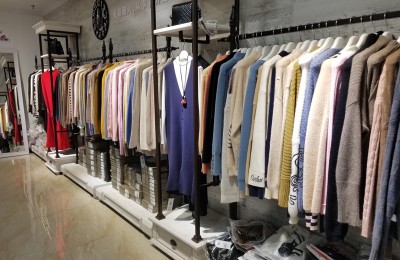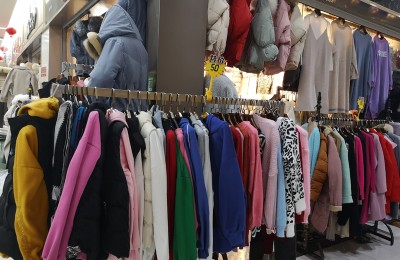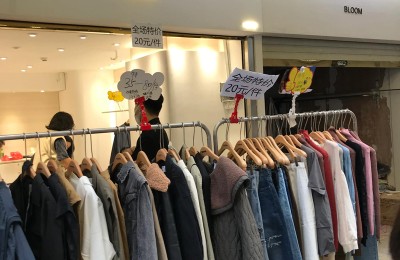Test process and test conclusion of natural dye printing
Experimental process and conclusions of natural dye printing
1Introduction
Dyeing and printing are surface decoration processes that add color and pattern to textiles. As a kind of local dyeing, the main purpose of printing is to use one or more non-color pattern artistic designs to produce a pattern with clear boundaries.
In ancient times, or before the invention of synthetic dyes, only natural dyes extracted from plants, animals or minerals could be used for textile printing. Since 1856 W. After Perkin invented synthetic pigments, the application of natural dyes as textile dyes was time-consuming and laborious, and they could not be pre-made into products ready for use. Therefore, it gradually lost its important status.
However, Germany began to ban certain azo dyes in 1996. These dyes have been found to be carcinogenic, teratogenic and allergenic. Therefore, people have turned their attention to “environmentally friendly” dyes. The reintroduction of natural environmentally friendly dyes has opened up business opportunities for the textile industry to use these dyes to develop new markets for natural printing and dyeing products. The natural textile products market is a huge market that needs to be fully developed. Making full use of these natural resources requires the joint efforts of many parties to develop corresponding technologies, processes and products. At present, most research focuses on natural dye dyeing and improving the color fastness of dyed products, while few involve its application in printing. This study only involves the application of 4 natural dyes in printing and products used in the preparation of silk and cotton printed fabrics, including clothing, home textiles and handicrafts. This research provides another new way to produce high value-added products.
2Test content
Fabric: Pure cotton and silk fabrics.
Dyes: 4 natural dyes originate from berberine tree roots (Berberis Vulgaris), walnut bark (Juglansregia), Rubiaceae shrub leaves (Hameliapatens) and jatrophaintgarrinma (Jatrophaintgarrinma), which are used for dyeing and printing on gray fabrics. Rubiaceae shrub leaves and jatropha flowers were collected from roadside shrubs on the university campus in Pantnagar, while walnut bark and berberine tree roots were collected from the hills of Kumaon area.
Reagents: hydrochloric acid and sodium carbonate are used to extract dyes, and alum, copper sulfate and ferrous sulfate are used as mordants.
Paste: dragon glue.
Dye refining medium Acid/alkali concentration/ml Dye concentration % Dye refining time/min
Source of dye (per 100ml water)
Cotton Silk Cotton Silk Cotton Silk
————————————————– ————————–
Jatropha flowers Acidic 1.0 5 6 60 60
Rubiaceae shrub leaves acidic 1.0 6 7 90 60
Berberine tree root Alkaline 0.8 5 4 60 60
Walnut bark Alkaline 1.0 5 5 90 90
2.1 Fabric pretreatment
2.1.1 Cotton fabric pretreatment
Scouring and Desizing: Fabrics are soaked in water overnight before dyeing and printing to remove natural and added impurities that interfere with printing. Then scouring in a bath containing 2g/L soap and 1g/LNaOH for 45 minutes. Cherry plum treatment: Cherry plums (4% of fabric weight) are soaked in water overnight and then filtered. The fabric was treated in the filtered solution at a liquor ratio of 1:20 for 1 h and then dried in the sun.
2.1.2 Silk fabric pretreatment
Degumming: The silk fabric is pretreated in a solution containing 0.5% (v/v) high-grade detergent (gentee1) at a temperature of 50°C for 30 minutes. The fabric is kneaded and squeezed by hand, and then rinsed with water until the detergent is clean. Wait for the fabric to dry in the shade and then iron it when it is semi-wet.
2.2 Paste preparation
Soak 250g of dragon glue in 1L of water overnight, stir thoroughly after swelling, and filter with fine cloth to make a clear slurry.
2.3 Dye extraction
Use optimal extraction methods (acid concentration, optimal raw material concentration and extraction time) to extract dyes from natural plants to achieve optimal color yield and color fastness.
2. Preparation of 4-color concentrate
The clarified extraction solution is heated and concentrated to obtain a dye concentrate. 100mL of extraction solution was concentrated to 5mL.
3Product Development
Product lines include: clothing, home textiles and handicrafts. Fabrics are screen printed using natural dyes with optimized printing formulas. Products can also be embroidered for added value. Developed apparel products include shirts, blouses and sarees. Home textile products include bed sheets and cushion covers. Artifacts include diary covers and wainscoting.
3.1 Clothing
The shirt is made of 100% cotton, printed with berberine tree root pigment using simultaneous mordant method, and the mordant is ferrous sulfate. The short-sleeved collarless shirt is made of pure silk, using walnut bark pigment and simultaneous mordant dyeing method, and the mordant is copper sulfate. The cotton saree is dyed with berberine root pigment and printed with walnut bark pigment, using simultaneous mordant dyeing method. Copper sulfate is used as printing mordant.
3.2 Home Textiles
Cotton bed sheets are dyed with walnut bark pigment and printed with jatropha flower pigment, using the simultaneous mordant dyeing method, and the printing mordant uses alum and ferrous sulfate.
Cushion cover silk dyed with berberine root pigment and alum mordant. Jatropha flower pigment and ferrous sulfate mordant are used for printing, and the mordant printing is performed simultaneously.
3.3 Handicrafts
Diary cover in berberine root colorMade of dyed silk, the mordant is alum, and printed using the simultaneous mordant method of jatropha anthocyanidin and ferrous sulfate mordant. The wainscoting is made entirely of silk and is printed with pigments from jatropha flowers, Rubiaceae leaves and berberine roots, and the mordant is alum.
4Test results
Natural dye printing on textiles seems to have an attractive prospect, but practical applications include printing tests on silk fabrics to evaluate the color fastness of printed samples.
Prepare different printing pastes according to the above formula, and use the screen printing process to print by pre-mordanting method and simultaneous mordanting method. After printing, the dye is steamed and fixed, and then the floating color is thoroughly washed and dried before color fastness is evaluated.
The color fastness of berberine root, walnut bark, jatropha flower and madder shrub leaf pigments ranged from fair to good on cotton fabrics and fair to good on silk, using pre-mordanted and The results of simultaneous mordant dyeing method are the same.
The color fastness to washing of cotton fabric samples using the pre-mordanting method ranges from poor to fair, and the color fastness of silk fabrics to fair to good. The color fastness of cotton fabrics using the simultaneous mordant dyeing method to washing is fair, and the color fastness of silk fabrics to fair to good. To good. Regardless of the pre-mordanting method or the simultaneous mordanting method, there is no staining on cotton fabrics and silk. Therefore, it can be considered that the color fastness to water of samples produced by the simultaneous mordant method is better than that of pre-mordanted samples. Among all natural dyes for printing, pigments from the roots of berberine trees and leaves of Rubiaceae shrubs have the best color fastness to washing, while pigments from walnut bark and jatropha flowers have the best color fastness.
Rubbing color fastness test results for pre-mordanted printed samples of all dyes showed slight to negligible discoloration on cotton and silk fabrics. The wet rubbing color fastness of the pre-mordanted printed cotton samples of all dyes is slight staining, and the dry rubbing color fastness is no staining. The wet rubbing fastness of berberine tree root pigments on silk fabrics is non-staining, while the pigments of walnut bark, jatropha flowers and Rubiaceae shrub leaves have slight staining on silk fabrics. No staining was found in the dry state of the printed silk samples pre-mordanted with the four dyes. The color fastness to rubbing test of the simultaneously mordant dyed samples showed that the discoloration of all dyes reached excellent fastness. The dry rubbing color fastness of cotton and silk mordant dyed samples reached a negligible staining level, while the wet rubbing color fastness was in the slight to negligible staining range. Therefore, the test results show that the rubbing color fastness of the simultaneous mordant printed samples is better than that of the pre-mordanted printed samples.
Berberine tree roots and Jatropha flower pigments are printed on cotton and silk fabrics using the simultaneous mordant dyeing method, and their color fastness to perspiration is better than that of walnut bark and Rubiaceae shrub leaf pigments when printed simultaneously. Therefore, the following conclusion can be drawn: simultaneous mordanting method is better than pre-mordanting method for cotton and silk printing.
5Conclusion
Printing is one of the ancient methods of making fabrics colorful. This study shows that natural dyes derived from berberine tree roots, walnut bark, jatropha flowers, and rubiaceous shrub leaves have been used in the past for textile dyeing and that these dyes can also be used for printing cotton and silk fabrics. These natural dyes can be used on cotton and silk to form a variety of soft, light-fast and rubbing fastness printing products that can also meet general requirements. 4N5RiF
Disclaimer:
Disclaimer: Some of the texts, pictures, audios, and videos of some articles published on this site are from the Internet and do not represent the views of this site. The copyrights belong to the original authors. If you find that the information reproduced on this website infringes upon your rights, please contact us and we will change or delete it as soon as possible.
AA




